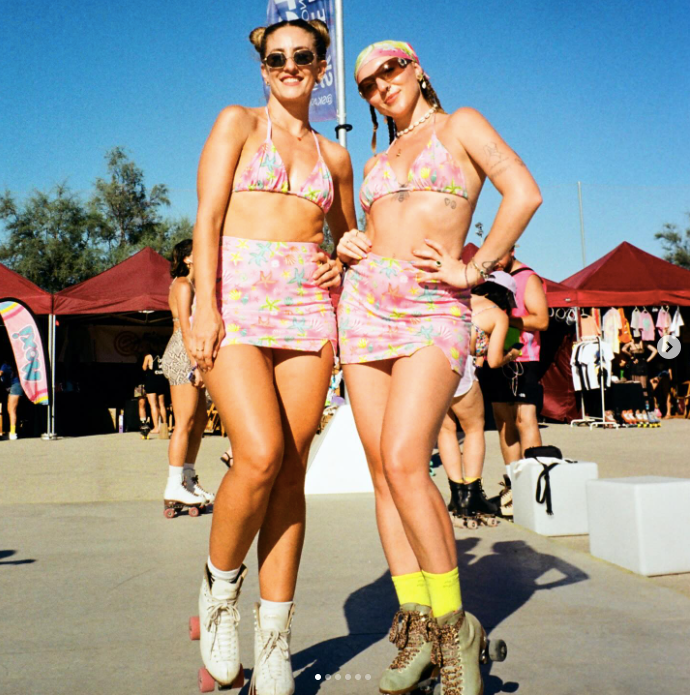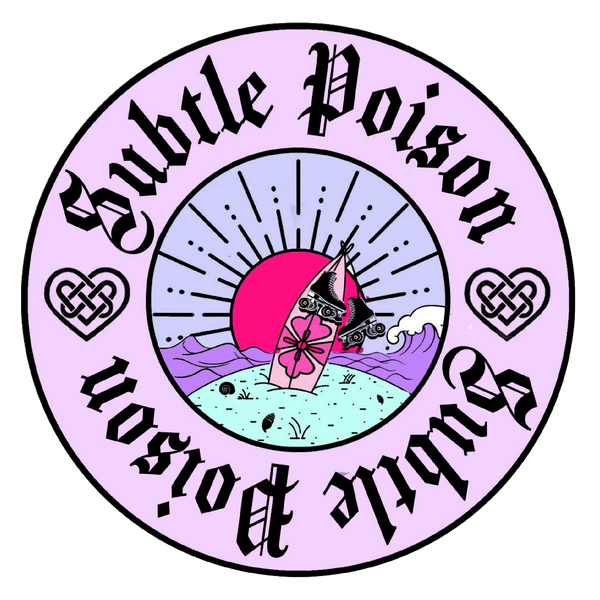
Rollerskate Culture and Artistic Self Expression
Share
Like many other niche subcultures, rollerskating is far more than just a set of wheels for most skaters. Although rollerskates have existed since the 1700s, it wasn’t until the 1950s and ’60s that rollerskating truly evolved into the vibrant culture we recognize today. This period coincided with the Civil Rights Movement, which is why Black culture plays such an essential role in defining rollerskating as it is today. Before the 1950s, when Black communities were finally allowed one night a week to enjoy roller rinks, more formal or artistic skating styles were common. Black skaters, however, introduced the energetic, disco-infused style that has since become synonymous with rollerskating.
During the 1960s, roller rinks offered Black individuals a space to dance, move, and skate freely—a vital refuge from the racism and discrimination they faced. This history is crucial because it reminds us that this subculture was born out of a desire to escape oppression and find freedom in artistic self-expression, a spirit that still resonates strongly within the community today.
Skating is far more than just movement; it’s an intricate choreography on wheels that seamlessly blends rhythm, balance, and style. Over the years, various skating styles have emerged, each serving as a unique canvas for personal expression. Jam skating, with its roots in breakdancing, showcases fluid, acrobatic moves, while shuffle skating focuses on rhythmic footwork often set to music. Park skating brings an edge of athleticism, incorporating tricks and stunts on ramps and rails. Beyond the technical aspects, skaters elevate their routines by weaving in elements of dance, gymnastics, and even storytelling, transforming their movements into vivid expressions of emotion and individuality.
The intersection of artistic expression and rollerskating is a vibrant and dynamic space where personal style meets functionality and creativity. Skaters often view their outfits as an extension of their skating identity, blending practicality with individuality.
Many skaters take pride in customizing their gear to reflect their personalities. From hand-painted skate boots to intricately designed laces, every detail tells a story. These bespoke touches not only enhance their look but also provide a sense of ownership over their craft.
Skaters often turn their artistic talents into entrepreneurial ventures. Whether it’s crafting jam plugs (used for dance skating), designing clothing lines that suit the unique demands of skating, or making bold, statement-making accessories, these side hustles enrich the skating community while showcasing creativity.
Outfit choices often echo the style of skating a person embraces. For example, jam skaters, known for intricate footwork and dance moves, might lean towards flexible, fitted clothing that enhances their movement. Park skaters combine durability with flair, often featuring knee pads and protective gear integrated into colorful and edgy styles. Freestyle or rhythm skaters may gravitate toward bold patterns, sequins, and flowing materials, reflecting the fluidity of their moves.
The DIY ethos is strong in the rollerskating world. Whether it’s stitching patches onto jackets, hand-making outfits for skating events, or repurposing everyday wear into skate-friendly attire, the act of creating is deeply personal and highly celebrated.
Rollerskating events and meetups are opportunities to go all out, with skaters donning thematic costumes, intricate makeup, and accessories. These expressions often align with the spirit of the event, turning skating into a mobile art exhibit.

https://www.instagram.com/reel/C_8ApBEsvkl/?igsh=MWpyOHZhdDRzY3FsbA==
In this blend of movement and creativity, rollerskating becomes more than a sport or a hobby; it’s a dynamic art form where skaters paint their personalities onto the canvas of the rink. Every spin, trick, and outfit speaks volumes about their identity and passion.
Beyond movement and personal style, skating offers a unique avenue for artistic expression through social media platforms. It seamlessly combines the art of the sport with the art of content creation, allowing skaters to build careers centered around their passion. The online world has also become a vital space for strengthening one of the key reasons many people stick with skating: community. Across cities and towns worldwide, vibrant skating communities have blossomed. Through the digital realm, skaters from diverse regions and backgrounds can stay connected and even meet in person at events like Skate Love Barcelona. Moreover, there’s an unspoken comfort in knowing that, as a roller skater, you’re likely to find a welcoming community wherever you go.
One of the most beautiful aspects of this community is the safe space it provides, often intertwined with activism and advocacy for justice. Many skaters participate in Pride parades, organize rollouts, and host events in support of causes like Palestinian solidarity. This connection to activism brings skating full circle, honoring its origins as a means of escape from daily oppression. What started as a way to create magic and beauty amid adversity has evolved into a platform for fighting for safer spaces and a better world.
This revolution on wheels continues to gain momentum. Today, we see the rise of pop-up rinks, artists like Usher incorporating roller skates into performances, and skaters collaborating with TV shows, fashion designers, and other creatives.
This growing visibility reveals a profound truth: rollerskating is more than a sport. It’s a lifestyle, an artistic outlet, and a cultural movement. It represents a form of liberation that unites diverse voices through a shared passion for rhythm, movement, and self-expression.
